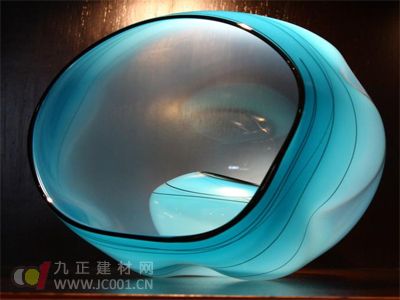Glass art refers to glass-based creations that embody the artist’s vision, reflect modern life’s inspiration, and carry artistic, decorative, humanistic, and collectible value. It is a unique form of expression that blends creativity with craftsmanship, often resulting in pieces that are both functional and aesthetically captivating.
**Development Overview**
**Foreign Development:**
Glass art has a long and rich history, with Western glassware dating back over 3,500 years. The study of glass has been deeply explored throughout history. In ancient Rome, glass was primarily considered a luxury commodity, but it wasn’t until the 1970s that glass art gained academic recognition when the Royal Academy of Fine Arts established its first glass program. Although this field is only about 40 years old, it has developed a clear framework, scientific standards, and a strong artistic context from its academic roots.

**Domestic Development:**
In the West, glass art is a well-established and highly valued collection category, often commanding high prices. China has a long tradition of glassmaking, with ancient glassworks serving as precursors to modern glass art. However, in the Chinese art world, glass art has historically been overlooked or misunderstood, often seen as cheap craft rather than serious art. This lack of awareness has hindered its growth. Chinese glass art began through collaborations with institutions like the University of Wolverhampton in the UK, which is regarded as the birthplace of modern Chinese glass art. Today, there are dedicated spaces such as the Shanghai Glass Museum and online platforms that promote glass art. Notable figures include Zhuang Xiaowei, the director of the Shanghai Museum, and Yang Huizhen, founder of Liuli Workshop.
**Collection Value**
The value of glass art can be assessed in three key aspects: material, artistic expression, and the artist’s aesthetic vision. The type of glass used can significantly affect the value—some materials are hundreds of times more valuable than others. The artist's skill in translating their ideas into visual form also plays a crucial role. Finally, the overall aesthetic quality determines the work’s artistic depth. Glass art demands not only technical mastery but also a deep understanding of artistic concepts. Because of this, truly exceptional works are rare and highly sought after by collectors in the West, with some fetching millions at auction.
It's worth noting that while "heavy materials and light craftsmanship" is a common standard for jade and other traditional Chinese collectibles, experts argue that focusing solely on material value is an outdated approach. The perceived value of materials like jade or gold is subjective and culturally influenced. From a material perspective, there is little difference between jade and a pebble. What makes something valuable is its rarity, cultural significance, and artistic merit.
Historically, glass was known in China as “璆ç³â€ (qiu lin) and “Land,†and was one of the earliest and most expensive man-made materials, reserved for the elite. Today, however, glass is so commonly used in daily life that its artistic potential is often overlooked.
**Future Prospects**
The Western glass art market is mature, with a well-established system for identification, valuation, and collection. Artists are often academics, and their works are clearly recognized by collectors. There are many professional artists, galleries, and museums dedicated to glass art. In contrast, China still has a limited number of glass artists—around 18 in total—most of whom follow the Western model. Only a few have established international collectors, while domestic interest remains low. This situation is similar to the early days of Chinese contemporary art, which found greater success abroad before gaining traction at home.
With rising demand for art investments in mainland China, and the already high prices of traditional collectibles like jade and porcelain, glass art is poised to become a major player in the domestic market. Currently, the market undervalues Chinese glass art, presenting a promising opportunity for collectors who recognize its growing potential. As awareness increases, this unique and expressive art form may soon gain the recognition it deserves.
Solar Light,Solar Lanterns,Solar Lamp,Solar Powered Lights
Ningbo Royalux Lighting Co., Ltd. , https://www.royaluxlite.com